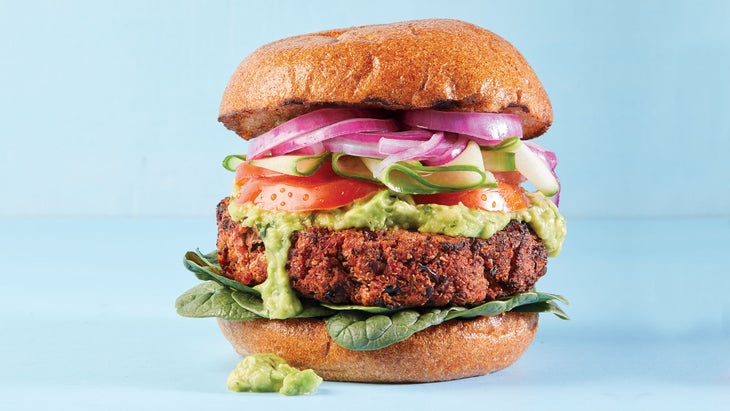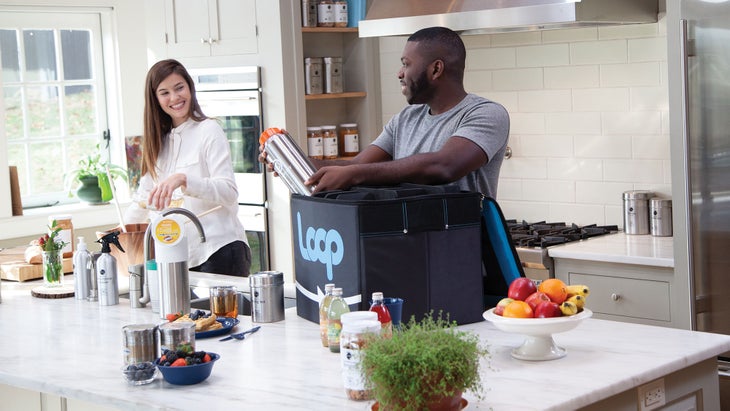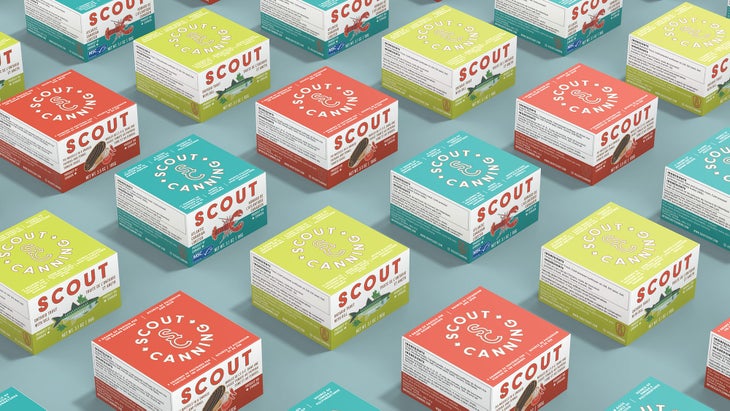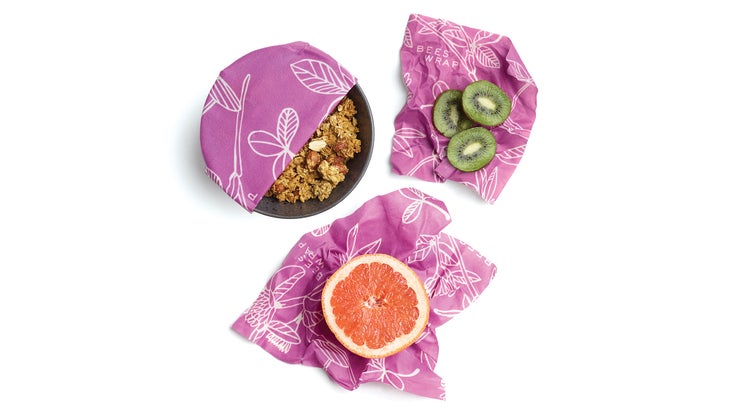Heading out the door? Read this article on the new Outside+ app available now on iOS devices for members! Download the app.
Are you ready to do more for the environment? You can start right at home – and we’re here to help! Clean Eating is launching the Green14 Challenge on June 21. Together, we’ll learn how to reduce waste and save money. It’s the perfect opportunity to discover even more eco-friendly ideas, like cooking tips, recipes and gardening advice for a greener life. You can make changes that have a positive impact on the environment. Sign up for the Green14 Challenge today!
Strolling through the grocery store, I was struck by how many brands seemed to cast their products in an earth- friendly glow: a growing sea of eco-conscious language and logos. In today’s market, “green” is gold. A 2018 Nielsen Global Corporate Sustainability Report found 80% of consumers feel strongly that companies should help improve the environment, and over 70% are willing to pay more for sustainable brands.
As a mother and a sustainable-diet expert, I see this as a good thing. We need forward-thinking companies leading the charge, and to do it at scale. But how do you separate what’s hype from what’s helpful? As we seek to make informed choices, here are some areas of confusion I’m seeing in 2020, along with real solutions to help you shop, eat and reach your green goals.

1. THE FICTION: Plant-based burgers are better for you. Plant-based burgers have skyrocketed in popularity, thanks to innovative companies refreshing menus with meat-alternative products. Fast food is reporting a spike in sales by featuring this new generation of burgers that look, taste and sometimes even “bleed” like the real thing.
These products seem to offer a healthier alternative to beef while also claiming to solve the environmental and ethical challenges of livestock production. One analysis from sustainability firm Quantis found the Impossible Burger used 96% less land, 87% less water and created 89% less greenhouse gas emissions.
THE FACTS: This category holds tremendous potential, but it’s not always as clear-cut as many marketers would have you believe: These burgers may indeed reduce carbon footprint, land use and water use compared to conventional burgers, but they likely still have a considerably higher impact on the planet than whole-food veggie burgers made of kitchen staples like rice or beans.
As for the impact on your health, while plant-based burgers are free from potentially harmful antibiotics and hormones often used in livestock agriculture, many of these benefits can also be gained by opting for premium- quality, organic grass-fed beef. As for nutrition, while the protein and calories in these patties are typically similar to beef, many contain significant levels of saturated fat and sodium, two nutrients that plant-based swaps should typically reduce.
Many have long, highly processed ingredient lists. Will these cultivate deep health in your genes and your biology the way plant-rich, whole-food diets do? Or will they ultimately come to be viewed by experts as another processed food to minimize? Until we have more science, my advice is this: These burgers may be fine as an occasional fast-food swap, but for everyday health, choose wholesome homemade veg burgers that meet CE ingredient guidelines.

2. THE FICTION: Recyclable or compostable packaging is always a green choice. Single-use packaging greatly contributes to a global plastic glut: Worldwide, we produce nearly 300 million tons of plastic yearly, half of which is used just once before heading to the trash. In the natural and organic sector, smaller packaging can be a way to offset higher price points.
To stem the flow of plastics into the environment, well-intentioned companies are trying to create better materials. Recyclable or compostable packaging has become popular, helping you feel like you’re making a difference. But does that mean they’re always a smart environmental choice?
THE FACTS: It depends. While recycling can help keep petroleum-based plastics out of the environment, a key factor is getting it to the right processing facility, which, unfortunately, doesn’t happen as much as it needs to for green packaging to be effective. According to the EPA, just 13% of glass containers and packaging gets recycled, while the rest ends up in landfills. Plus, recent shifts in the global recycling market (many countries in Asia have stopped accepting materials from Western countries) have made it trickier for cities to find international processors for their garbage, meaning no matter how well-intentioned your habits may be, much of your carefully sorted recycling risks ending up in the landfill.
What about compostables that break down into the environment in a nontoxic way? While certainly a better option, compostable materials need very specific conditions (such as oxygen, moisture and sunlight) to break down and can contaminate recycling streams if tossed in unknowingly.
Like recyclables, they can also have a hard time ending up in the right place, as many areas (including where I live) do not yet offer composting.
If you can’t get these compostable products to their right end location, any advantage they have over conventional packaging may be lost. The greenest choice, according to the EPA, is to avoid the throwaway factor altogether (aka “reduce”), or choose reusable, closed- loop packaging. Numerous start-ups offer subscription services akin to a “modern milkman” model. Platforms like LOOP sell everyday essentials (think shampoo and oatmeal) in reusable, chic containers that, when empty, are picked up, returned to the company, washed and refilled. Toronto-based company Saponetti crafts eco-friendly cleaning supplies in refundable Mason jars and delivers them by electric vehicles.
Low-tech, tried-and-true habits also can make a meaningful difference, such as buying in bulk, bringing your own bags when shopping or urging your local grocery to expand refill-station options. Companies such as MOM’s Organic Markets have been a pioneer in this area.

3. THE FICTION: Sustainable grocery shopping is expensive. Fruits and vegetables can be pricier than fast-food options, especially compared on a calorie- per-calorie basis. Plus, certified products (such as USDA organic, biodynamic or Regenerative Organic Certified) that are better for the planet typically cost more. Does this mean sustainability will break your budget?
THE FACT: For most Clean Eating readers, the secret to affordable and sustainable eating lies in shifting where and how you spend your food dollars.
Shop in-season produce at local farmers’ markets to score nutrient-dense produce at a bargain while also slashing food miles (perishable produce is flown in when purchased out of season, dramatically expanding the carbon footprint). Swapping animal protein for beans – which are a fraction of the cost of meat – a few times weekly can also reap big climate rewards: A study by Carnegie Mellon University found going vegetarian just one day a week cut more greenhouse gasses than switching to an all-local diet.
Another win-win: skipping the seafood counter in favor of tasty, affordable choices lower on the food chain, like sustainably sourced canned sardines, clams or mussels. One of my favorites is start-up Scout craft cannery, where I’m an adviser (enjoyscout.com).

Even your kitchen routine can be spruced up while slimming expenses: Use multipurpose rags instead of paper towels, plastic-free wrap like Bee’s Wrap (beeswrap.com) to help de-plasticize lunchboxes or make one fabulous workhorse DIY cleaner for everyday cleaning.